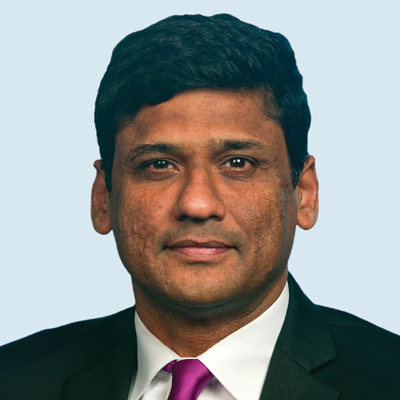What AM Best Says
AM Best: Rise in Litigation Complicates Improving Directors and Officers Market
The sector’s profitability has been particularly hit from lawsuits related to the COVID-19 pandemic and social issues, said Sridhar Manyem, director, industry research and analytics, AM Best.
Directors and officers professional liability underwriters have seen strong rate increases over the past three years after a long soft market, but the sector is “still not completely out of the woods” in terms of profitability, an AM Best analyst said.
At issue is the rise in litigation related to the pandemic and social issues, said Sridhar Manyem, director, industry research and analytics, AM Best. His comments came during the virtual RIMS Live 2021 conference, where he led an online session called “D&O Insurance: Coping with Increased Litigation in the #MeToo and Black Lives Matter Era.”
Manyem said while D&O rates are hardening and moving in the right direction, the direct effects of the pandemic appeared in lawsuits showing companies had misrepresented claims in industries such as life sciences, cruise ship operations and health care. He said insurers could see even more COVID-related litigation from businesses experiencing distress once the security provided by forbearance and government aid wears off. Even so, he added, insurers may be facing less such litigation than some had expected.

The most notable aspect of the current D&O market is 2020 written premiums, which are up significantly compared with the four years prior to 2019.
Sridhar Manyem
AM Best
Increased Underwriting Complexity
Manyem's presentation addressed pricing and claims trends, current changes such as litigation financing, and increased underwriting complexity as it relates to claims and loss adjustment expenses.
He acknowledged reports that state the D&O market is hard with new capital entering, but he explained that AM Best doesn't think that is quite the case, as the rating agency defines a hard market as one that is able to meet or exceed its cost of capital.
Another aspect of professional liability risk that has been prominent “for quite some time now” is social inflation, Manyem said. AM Best defines social inflation as an increase in loss costs due to increased litigation, a broader interpretation of insurance contracts in favor of plaintiffs, larger punitive damages because of jury demographics, and increased negative sentiments toward corporations that have resulted in jury awards, he said.
This problem can be exacerbated for D&O insurers by litigation funding and development of asset-backed securities for litigation-financed receivables. This kind of financing could cause increased frequency and severity of litigation, in part because the financing can be “patient and persistent,” he added.
In Australia and in some U.S. states, governments are looking to impose some sort of supervision over these kinds of litigation financing, said Manyem.
Impacts of Sexual Harassment, Discrimination
Also driving litigation are the #MeToo movement, a heightened focus on diversity issues, and Black Lives Matter, Manyem said. As a result, insurers are closely watching the policies of covered companies, he said.
Directors and officers also must face “protracted and agonizing legal processes” due to disparaging behavior, which causes reputational damage as well as increased litigation severity, he said.
When the National Association of Insurance Commissioners announced last summer its formation of a special committee on race in insurance, officials warned the proceedings would elicit “difficult conversations” about the industry's record on race. Bits and pieces of those conversations made their way into the NAIC Spring Meeting of the Special Committee on Race in Insurance, as regulators and industry representatives revealed sore points—and areas of agreement—that have emerged over recent months.
Corporations that publicly touted diversity but “failed to walk the walk” are facing more litigation, Manyem said, in addition to being targeted because of specific events.
“These trends are here to stay because they are getting codified in legislation,” Manyem said.
D&O insurers also are facing more cyber exposure due to a rise in cyber breaches and ransomware attacks, particularly with so many people working from home, said Manyem. Some of these issues may not be limited to cyber policies and could therefore spill over into D&O coverage, he said.
For example, government edicts such as the European Union's General Data Protection Regulation and California's Consumer Privacy Act shift more responsibility for breaches to company directors and officers, Manyem said.
Written Premium on the Rise
The most notable aspect of the current D&O market is 2020 written premiums, which are up significantly compared with the four years prior to 2019, said Manyem. That soft market was due to a variety of factors, including a ready supply of capacity, a reinsurance market where property catastrophe prices were low, and reinsurers looking for diversifying risks, he said.
In 2020, rates increased 38%, more than double the 17% increase in 2019, he said.
The D&O industry loss ratio remains high, but the number of securities class actions fell in 2020, giving the industry some hope, said Manyem. He said severity of litigation settlements still remains higher than the long-term average. And defense costs remain high.
Still, “among the gloom and doom,” he said, the market is tightening on the supply side.
Since 2004—disregarding strong rate increases over the past three years—prices mostly fell in a soft market known for its long-tail development, causing consternation among underwriters, said Manyem.
The premium increases appear to be from rate increases and strategic portfolio movements rather than exposure, said Manyem, who is head of AM Best's industry research team. His responsibilities include publishing the global credit rating agency's perspectives on insurance industry trends and their possible implications to Best's Credit Ratings, according to AM Best.